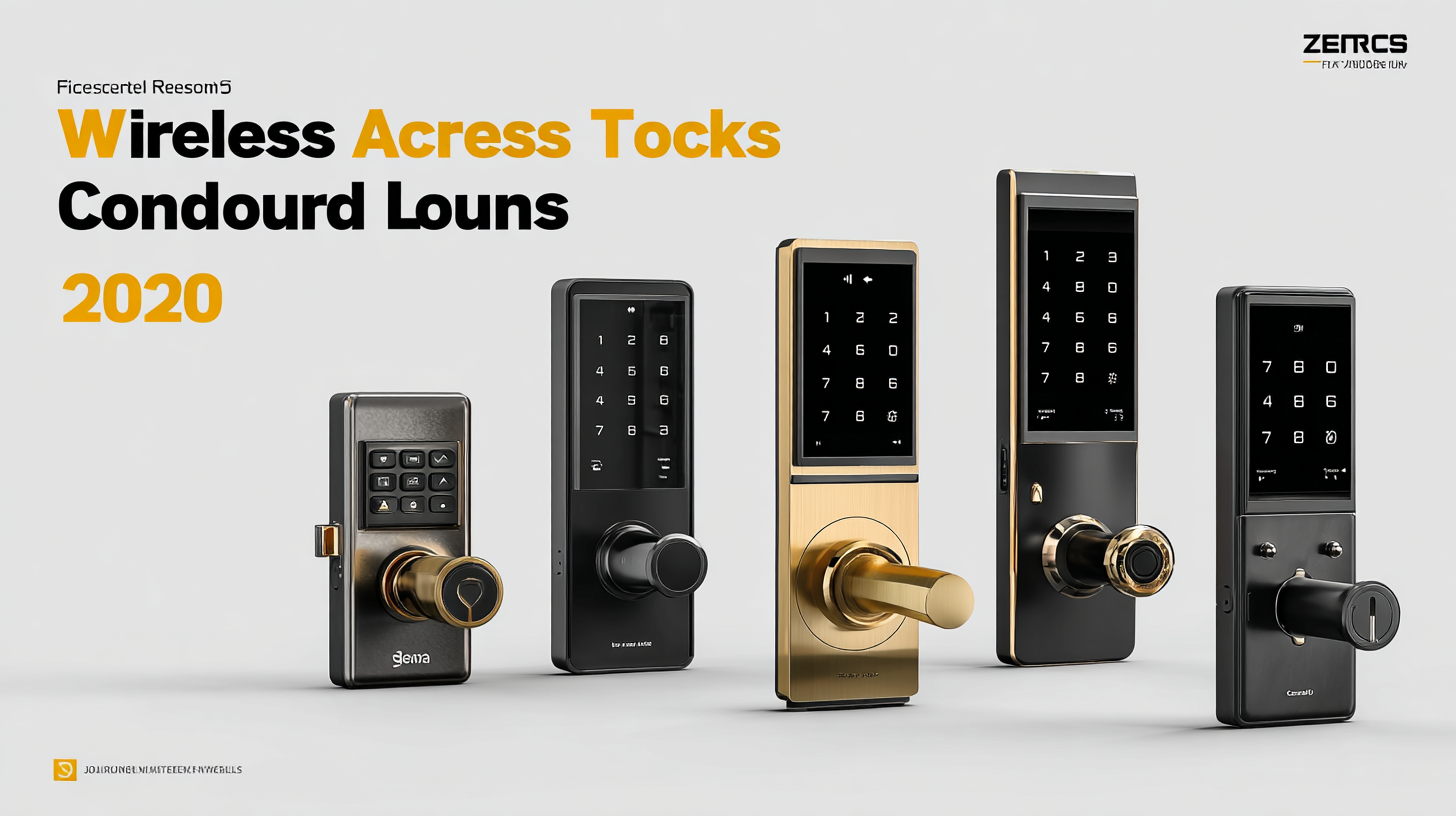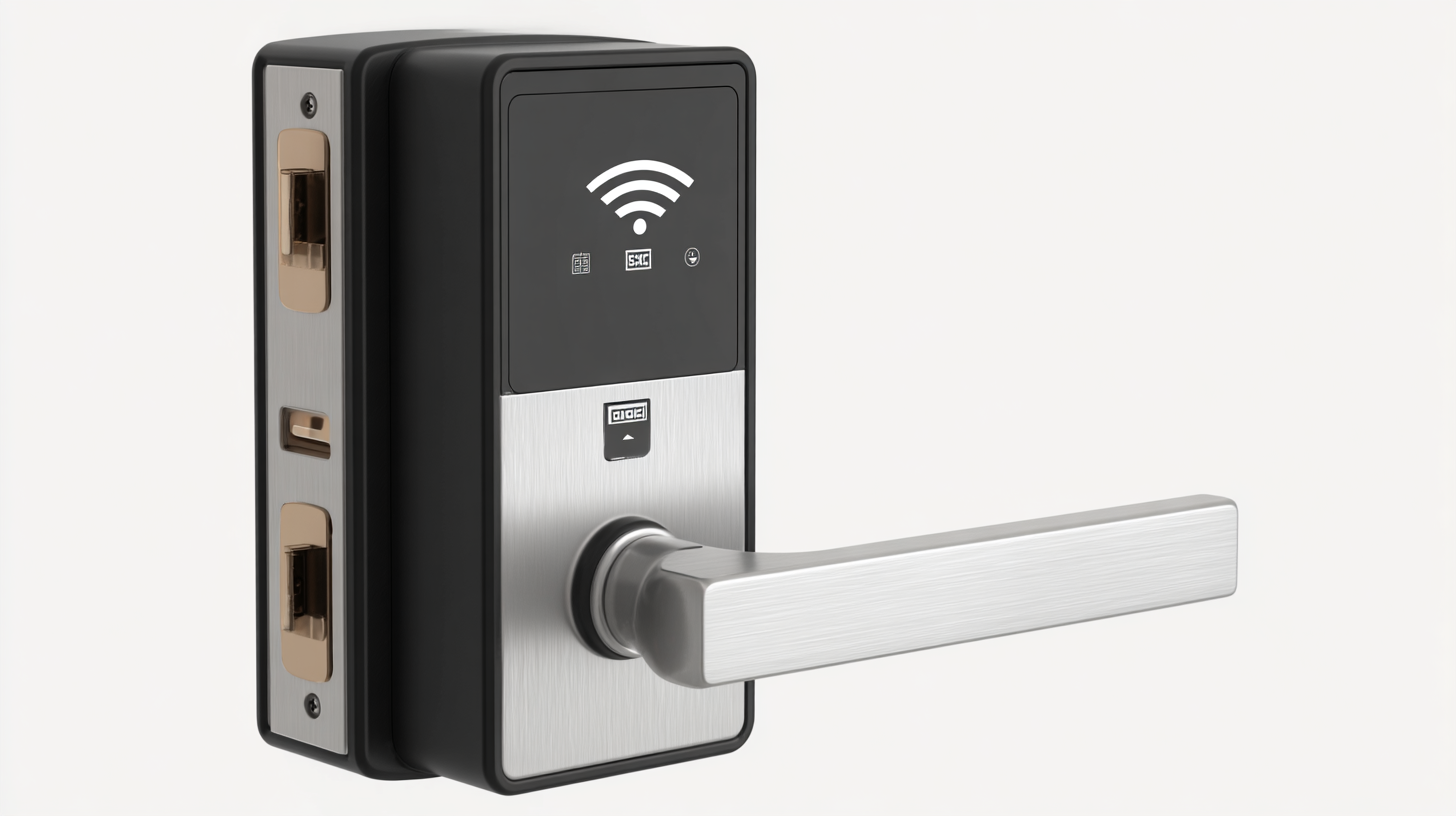Future Trends in Wireless Access Control Locks Market Analysis for 2025 Insights and Projections
As we look ahead to 2025, the landscape of security is evolving rapidly, driven by advanced technologies and changing consumer needs. One of the most significant innovations in this realm is the rise of Wireless Access Control Locks, which offer enhanced convenience, security, and flexibility for both residential and commercial applications.

In this blog, we will explore the future trends shaping the Wireless Access Control Locks market, examining key insights and projections that indicate how these intelligent locking systems will redefine security solutions. By delving into the myriad of factors propelling this growth, including the increasing adoption of smart home technologies, the demand for robust security measures, and the integration of IoT, we will unravel the reasons why Wireless Access Control Locks are poised to dominate the market in the coming years. Understanding these dynamics will provide valuable knowledge for stakeholders looking to navigate this evolving industry landscape.
Future Innovations in Wireless Access Control Lock Technology
The wireless access control locks market is poised for significant innovations as we approach 2025. The advent of advanced technologies such as Internet of Things (IoT) and artificial intelligence (AI) is set to transform the functionality and reliability of these security systems. Future innovations will likely focus on enhancing user experience through seamless integration with smart home devices, enabling more convenient and secure access management. For instance, locks could be designed to work with voice-activated systems, allowing users to unlock doors hands-free while ensuring optimal security.

Another key trend in the development of wireless access control locks is the incorporation of biometric features. Advancements in fingerprint recognition and facial recognition technologies are expected to make these locks more secure and user-friendly. Additionally, the integration of machine learning algorithms could lead to adaptive security measures that learn from user behavior and alert homeowners of any unusual activity. As the demand for advanced security solutions continues to rise, these innovations will play a crucial role in shaping the future landscape of wireless access control locks, making them more efficient and smarter than ever before.
Market Growth Drivers: Key Factors Shaping the Future Landscape
The wired access control locks market is poised for significant growth, driven by several key factors. According to a report by Research and Markets, the global market for wireless access control systems is projected to reach approximately $28 billion by 2025, growing at a compound annual growth rate (CAGR) of 14.5% from 2020. This surge is attributed to the increasing demand for advanced security solutions across various sectors, including commercial, residential, and institutional domains.
Another important driver shaping the future landscape is the proliferation of smart technologies. The integration of Internet of Things (IoT) capabilities in wireless locks allows for remote management and enhanced functionality, which is appealing to consumers looking for convenience and improved security. A study by Mordor Intelligence indicates that the adoption of IoT in access control systems is expected to increase significantly, with the segment accounting for almost 35% of the market share by 2025. As more consumers and businesses recognize the value of smart access solutions, the demand for wireless control locks will continue to rise, fundamentally transforming the security industry.

Consumer Preferences: Understanding User Needs and Expectations
Consumer preferences are at the forefront of the evolution in the wireless access control locks market. As security concerns heighten, users increasingly seek solutions that blend convenience with robust protection. Modern consumers expect not only advanced technology but also seamless integration with their existing smart home ecosystems. They desire locks that can be easily operated via smartphones, allowing for remote access and monitoring. This shift towards mobile-centric security reflects a greater trend towards personalization, where users appreciate the ability to customize settings and controls according to their specific needs.
Moreover, consumer expectations extend beyond functionality to encompass aesthetics and user experience. Today's buyers are inclined towards sleek and modern designs that complement their home decor. Intuitive interfaces that simplify usage, combined with reliable customer support, enhance overall satisfaction. Additionally, as consumers become more environmentally conscious, there is a growing demand for energy-efficient products that maintain security without sacrificing sustainability. Understanding these needs will be essential for manufacturers aiming to capture market share in the highly competitive landscape of wireless access control locks by 2025.
Competitive Strategies: How Leading Brands are Adapting
As the wireless access control locks market evolves, leading brands are increasingly adopting innovative competitive strategies to stay ahead. One of the significant trends is the integration of smart technology into lock systems, enhancing user convenience and security. Companies are focusing on developing mobile apps and cloud-based solutions that allow users to control and monitor access remotely. This shift not only improves user experience but also leverages data analytics for better security management.
Tip: When considering wireless access control solutions, look for brands that offer strong customer support and regular software updates. This ensures your system remains secure and up to date with the latest technology.
Additionally, many brands are forming strategic partnerships with tech firms to enhance their product offerings. Collaborating with software developers enables them to integrate advanced features, such as biometric authentication and integration with IoT devices. This adaptability not only meets the growing consumer demand for seamless connectivity but also positions these brands as leaders in innovation.
Tip: Explore options that provide scalability, allowing you to upgrade your system easily as your needs change. This future-proof strategy can save you time and resources in the long run.
Future Trends in Wireless Access Control Locks Market Analysis for 2025 Insights and Projections
| Region |
Market Size (Million USD) |
CAGR (%) |
Key Trends |
Competitive Strategies |
| North America |
450 |
10.5 |
Increased Smart Home Integration |
Adopting IoT technology |
| Europe |
350 |
9.8 |
Focus on Energy-Efficiency |
Sustainable Products Development |
| Asia-Pacific |
300 |
12.2 |
Rapid Urbanization |
Expanding Distribution Networks |
| Latin America |
120 |
8.5 |
Growing E-commerce Sector |
Collaborations with Retailers |
| Middle East & Africa |
100 |
7.5 |
Rise in Security Concerns |
Local Manufacturing Partnerships |
Regulatory and Security Trends Impacting Wireless Access Control Solutions
The landscape of wireless access control locks is evolving rapidly, driven by stringent regulatory measures and a heightened focus on security. According to a recent report by Markets and Markets, the global wireless access control market is projected to reach $28.3 billion by 2025, growing at a CAGR of 14.6%. This growth is largely influenced by rising demand for advanced security solutions across various sectors, including commercial properties, residential buildings, and healthcare facilities. Regulatory trends, especially those mandating enhanced security protocols, are prompting organizations to adopt more sophisticated wireless access systems.
Moreover, the rising threat of cyberattacks has led to the incorporation of robust encryption technologies in wireless access control solutions. A report from Grand View Research highlights that the need for compliance with data protection regulations, such as GDPR in Europe and CCPA in California, is compelling businesses to strengthen their security frameworks. As organizations transition to IoT-driven technologies, the integration of AI in access control systems is becoming increasingly vital. This not only aids in real-time monitoring but also helps in swift incident response, enhancing overall security posture in the face of evolving threats.



